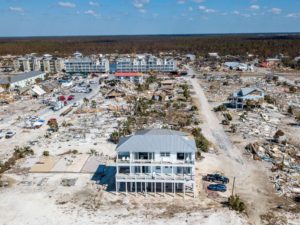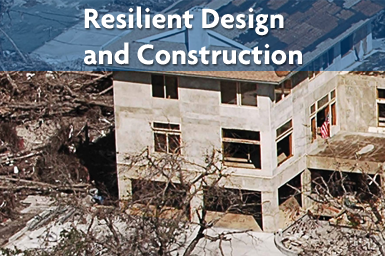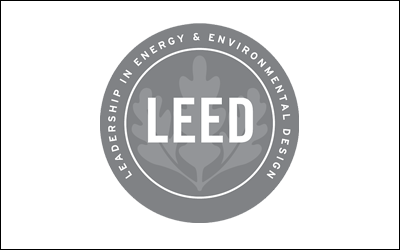 Communities across the Southeast continue to adopt programs for sustainable development. Durable construction can be an important component of such programs. The durability and fire resistance of non-combustible concrete masonry construction are qualities that can help communities satisfy their desire to become more sustainable.
Communities across the Southeast continue to adopt programs for sustainable development. Durable construction can be an important component of such programs. The durability and fire resistance of non-combustible concrete masonry construction are qualities that can help communities satisfy their desire to become more sustainable.
How sustainable are structures constructed of materials that will not adequately resist fire spread and may even contribute to a fire? Unlike some other construction alternatives, durable, non-combustible concrete masonry construction does not fuel a fire.
But beyond the issue of whether or not construction materials will burn is the larger issue of fire containment. Non-combustible concrete and masonry construction can provide fire containment by compartmentalizing multi-family structures so that each living unit is protected from the spread of fire through adjoining walls and floors.
Providing adequate fire containment with minimum two-hour fire-resistant concrete masonry walls between living units and between living units and public spaces will typically contain fires to the unit of origin. This reduced fire spread not only limits the amount of post-fire repair and reconstruction but also limits the amount of pollution resulting from burning contents within the building.
Following disasters, fires may burn out of control due to reduced resources or access and/or loss of water supply. Concrete masonry construction can limit the size and spread and of such fires.
Such uncontrollable fires can lead to firestorms spreading to multiple buildings and even blocks of buildings. Water supply, available resources, and access may be limited due to wildland fires; hurricanes, tornadoes or other high wind events; ice or snowstorms; and earthquakes.
See more on Resilience.
Non-combustible concrete masonry construction provides many other benefits to communities seeking to promote sustainable development, such as:
- thermal mass benefits for reduced heating and cooling needs
- durability for reduced building replacement and increased building reuse
- low maintenance and reduced need for routine painting or frequent cleaning in order to retain a desirable appearance
- sound transmission resistance, creating more comfortable living and more productive work environments
When it comes to building construction for sustainable development, there is no comparison to non-combustible concrete and masonry construction. For more information about combining smoke detectors, fire sprinklers, and passive fire protection visit the Pennsylvania Fire Safety Construction Advisory Council.
Concrete Masonry Units Sustainability
SCMA’s concrete masonry units producers are committed to sustainably producing the highest quality product needed to build durable, resilient concrete masonry buildings and infrastructure that support safe and strong communities and power the U.S. economy. Concrete Masonry is a sustainable building material – providing energy efficiency, long-life cycle, lower life-cycle costs and resilience following natural and man-made disasters.
Sustainable Manufacturing of Concrete Masonry
SCMA concrete masonry producers have a strong culture of innovation that has led to gains in energy efficiency and new sustainable manufacturing practices that continually reduce environmental impacts.
Company-driven improvements have led to improved equipment reliability, energy efficiency, and the increased the use of alternative fuels
The SCMA concrete masonry producers also are in the constant pursuit of finding ever more innovative and efficient ways of producing the highest quality concrete masonry units our nation needs for residential and commercial construction.
Sustainable Concrete Construction
The energy savings, resilience, and associated greenhouse gas emission reductions from constructing buildings and infrastructure with concrete masonry more than offset the emissions from concrete masonry manufacturing over the life of a structure.
There are many reasons why concrete masonry is a sustainable building material:
- Long-life – Concrete masonry structures are long-lived, service life of 50+ years.
- Low life-cycle cost – Concrete masonry consumes minimum materials, energy and other resources for construction, and requires little to no maintenance throughout its service life.
- Safety and reliability – Concrete masonry does not rust, rot or burn
- Resilience – concrete masonry is resistant to natural and man-made disasters. Because of its durability, concrete masonry structures will not require additional carbon release to produce additional materials used for repair.
More concrete masonry sustainable resources:

Buildings and structures with resilient design and materials are not only better able to recover following disasters, such as hurricanes or fires, they are also the new “green” buildings.
Learn more >>

Leadership in Energy and Environmental Design (LEED®) is a rating system devised by the United States Green Building Council (USGBC) to evaluate the environmental performance of a building and encourage market transformation towards sustainable design.
Learn More >>